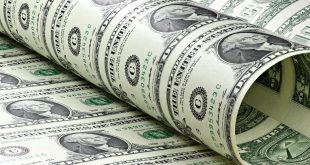All expectations that signals by BoC and RBA could push the world’s monetary policy actors to accelerate their own timelines for interest rate hikes, ran into a solid wall with the U. S. Federal Reserve and European Central Bank announcing they would not hike interest rates so fast, though Fed announced tapering in mid-November.
Central Banks : Stimulus Tapered, Interest Unchanged
Powell made it crystal clear that Fed officials make distinction between the taper of $120 billion a month of bond purchases to zero by mid-2022, announced Wednesday, and interest hike.
As for interest rate hikes, the remarks by Powell in the post-meeting news conference signaled that Fed opted to stay patient and to await more job growth, before raising interest rates.
Similarly, the Bank of England’s MPC decided to leave the benchmark interest rate unchanged at 0.1% following the November policy meeting. in line with the market consensus, market pricing was pointing out to a 50% chance of a 15 basis points rate hike.
Inflation
Stubborn inflation across more wealthy economies last week prompted a collapse across bond markets as investors began expecting central banks to quickly tighten monetary policy.
The Reserve Bank of New Zealand’s governor, Adrian Orr, stated that the unsustainable level of house prices has imposed monetary, financial stability challenges on the country’s economy.
Domestic banks are working to consulting house seekers as well as residential loan seekers on additional debt servicing ratios.
Japanese stocks closed lower on Tuesday as investors were reluctant ahead of an important meeting of the US Federal Reserve, which may reveal more of its plans to scale back stimulus measures and raise interest rates.
Oil and Energy
Crude oil prices are expected to hold near $80 as the year ends, as tight supplies and higher gas bills encourage a switch to crude for use as a power generation fuel. Post-pandemic demand rebound as OPEC+ is sticking to gradual, monthly production increases of 400,000 barrels per day, despite calls for more oil from major consumers.
Oil prices fell marginally during the week’s sessions particularly prior to OPEC+ meeting Thursday, as well as the US Federal Reserve meeting, inflation related developments and the destiny of recovery highly impact demand. Brent crude futures for January 2022 delivery scored about $84.33 a barrel, down 0.33%, and US crude was about $83.43 a barrel, down 0.74%.
China’s data and movements were the main drivers of events, as China’s demands for families to store their food and basic needs sufficiently before the winter, worried people about the possibility of another closure during the winter.
This led to a decline in coal prices in Europe for delivery next year by more than 50 percent from its peak at the beginning of October, which reached 193 dollars, to record about 100 dollars now.
Oil trimmed its weekly loss as Saudi Arabia increased prices for its global crude exports and the U.S. is still considering a potential release of oil from the strategic reserve. Crude oil in New York session smoothed its weekly loss to 2.8%, rising sharply late in the session Friday after Saudi Arabia raised the official selling price of all the nation’s crudes to buyers around the world.
The Saudis boosted prices just after refusing to bend to U.S. pressure to pump more oil. With OPEC unanimously agreeing to stick to its plans, attention now turns to whether U.S. President Joe Biden will respond.
The increase in Saudi Aramco prices suggests Saudi Arabia sees demand is still improving, particularly in Asia where a resurgence in coronavirus cases could seed doubts about the strength of the economic recovery.
World Economy
Investors spent so much time concerned and afraid of taper in September and early October. The significant development across financial markets by the end of the week is that the majority of investors are now seeing tapering as a positive sign.
Markets were busy digesting the outcome of the UN COP26 climate summit in Glasgow, which kicked off on Sunday, where global leaders negotiated divisive issues and set a new post-2025 climate finance commitment.
Japanese stocks surged to a one-month high, boosted by expectations of government stability and more fiscal stimulus after Prime Minister Fumio Kishida’s ruling party won majority in parliamentary elections.
So many jobs depend on automaking, this is why the industry’s production problems are causing tedious pain to several businesses and organizations.
The Opel factory in Eisenach, Germany, is halting production and doesn’t plan to restart until next year, the issue is worsened by a paralleling shortage of drivers.
The Nikkei index posted its biggest gain in more than 4 months, up 2.61% to 29,647 points, its highest since late September. The broader Topix index rose 2.18%, reaching its highest level in a month at 2044.72 points.
Turkey’s trade deficit narrowed 39% year-on-year to $1.46 billion in October, the Turkish Ministry of Trade said.
U. S. Economy
Nonfarm Payrolls (NFP) in the US rose by 531,000 in October, the data published by the US Bureau of Labor Statistics showed on Friday. This reading came in better than the market expectation of 425,000. Additionally, September’s print got revised higher to 312,000 from 194,000.
The unemployment rate fell to 4.6% which is lower than the forecast of 4.7%. These positive results come two days after the Fed decided to start tightening monetary policy and reduce the volume of monthly purchases by about $15 billion per month.
The dollar rose in early European trade on Monday, extending gains from the previous session after strong inflation numbers reinforced monetary policy tightening at this week’s Federal Reserve meeting.
Data on Friday showed that the Fed’s preferred measure of inflation, the core personal consumption expenditures index, rose at an annual rate of 4.4% in September, the fastest since 1991.
Senator Joe Manchin said, Monday, he does not support the $1.75 trillion social safety net expansion bill Democrats are negotiating until there is greater clarity about its impact on the country’s national debt and the U. S. economy, casting major doubt about whether President Joe Biden can get his agenda through Congress.
Wall Street
U. S. shares hit record highs, led by a surging energy sector, before the benchmark S&P 500 index retreated slightly, whereas European shares also hit record highs following positive corporate earnings reports, while a surge in banking shares helped Eurozone markets remain buoyant.
Dow Jones futures were higher early Tuesday after the stock market rally hit record levels yesterday. Tesla stock surged to more all-time highs. And Mosaic, NXP Semiconductor and ZoomInfo were three earnings movers after the close.
Tesla surged, on Monday, 8.5% to hit more record highs. Among companies reporting earnings, Mosaic, NXP Semiconductor and ZoomInfo reported earnings after the close Monday.
Wall Street’s main indexes rose on Tuesday to record highs on the back of strong corporate earnings.
The U. S. seasons continued to lift sentiment for equities, while investors await a critical Federal Reserve meeting. The S&P 500 and Nasdaq notched record closing highs for a fourth successive session, while the Dow Jones Industrial Average posted its third successive high close and ended above 36,000 for the first time.
Pfizer shares rose 4.1% after the drugmaker said it expected 2021 sales of the COVID-19 vaccine it developed with German partner BioNTech to reach $36 billion.
Q3 corporate earnings have come in better-than-expected for U.S. companies as the economy continues to bounce back from the coronavirus pandemic. With some 320 companies having reported so far, S&P 500 earnings are expected to have climbed 40.2% in 2020. Nine of 11 S&P 500 sectors ended positive with materials leading the way, up 1.1%. The energy sector fell 1%.
Eurozone
European shares hit record highs on Monday, entering November with a solid momentum s on the back of positive corporate earnings, while a surge in banking shares helped buoy the Eurozone markets. Eurozone banks .SX7E jumped 2.4% – hitting their highest level in more than two years – as investors held on to their bets for two interest rate hikes from the European Central Bank (ECB) next year.
Shares in German conglomerate Thyssenkrupp TKAG.DE and steelmaker Salzgitter SZGG.DE rose around 3% after the U.S. and the European Union ended a dispute over steel and aluminium tariffs.
Positive trading dominated the euro’s movements against the US dollar yesterday, after the European Central Bank President’s statements, reaching its highest level at 1.1692.
European shares fell on Tuesday from their unprecedented levels, as traders awaited upcoming meetings of central banks to elicit indications on decisions to gradually reduce stimulus and interest rates, while the decline in iron ore prices affected the shares of mining companies.
Mining stocks led the losses, falling 2.4 percent due to the decline in the iron ore market and the decline in copper prices.
Jobs
The Unemployment Rate in Canada declined to 6.7% in October from 6.9% in September. Net Change in Employment arrived at +31.2K in the same period, beating the market expectation of 19.3K. The Participation Rate edged lower to 65.3% from 65.5% in the same period and the Average Hourly Wages rose by 2.1% on a yearly basis.
The data of the Bureau of Labor Statistics in the United States, Friday, for October showed a positive performance on the US employment data for the first time in 3 months.
Gold
The yellow precious metal price is barely moving although the short term market situation is not in favour of gold.
On Monday, the troy ounce cost $1,788. Gold has been rather volatile recently and definitely shows an inverse correlation to the USD.
In general, daily bearish trend is suggested to continue as long as trading is stable below the main resistance 1799, 50.0% correction and its breach will stop the bearish scenario immediately, and gold will recover to retest the top that was recorded recently 1810.
Commodities
Commodities are rising again, with copper, aluminum, crude oil, natural gas and wood reaping significant gains compared to pre-pandemic levels.
Supply disruptions and a global push toward sustainability may be driving the commodity boom, even as fiscal stimulus and low rate policies also impact the overall economic scene.
The U.S. government and the Federal Reserve have both acted aggressively to keep demand from collapsing since the beginning of the pandemic.
From its April 2020 lows, wood prices, for example, gained an astonishing 570% before hitting a high in May of 2021. But in the two months that followed, it lost 70% of its value. This dramatic collapse led some to believe that the post-pandemic increase in commodity prices was nearing an end.
But while the volatility of prices was occupying the attention of many traders, the rest of the commodity complex was quietly making significant gains. From just prior to the pandemic, copper prices have gained 55%, while aluminum prices have gained 65%. Even crude oil, which was conspicuously late to the rally, has climbed in recent months and now sits at a 30% gain compared to pre-pandemic level.
Crytocurrencies
Bitcoin price is around $62,130 per coin, while rivals Ethereum and Dogecoin are trading around $4,335 (+1.71%) 27.4 cents (3.95%) per coin, respectively.
The October rally by bitcoin has stabilized the popular cryptocurrency ahead of central bank meetings in the U.S., U.K. and Australia to assess the status of inflation and determine policy response.
Bitcoin rallied nearly 40% in October, hitting a fresh record high of $66,975. That was the biggest single-month percentage rally since December 2020.
 Noor Trends News, Technical Analysis, Educational Tools and Recommendations
Noor Trends News, Technical Analysis, Educational Tools and Recommendations





